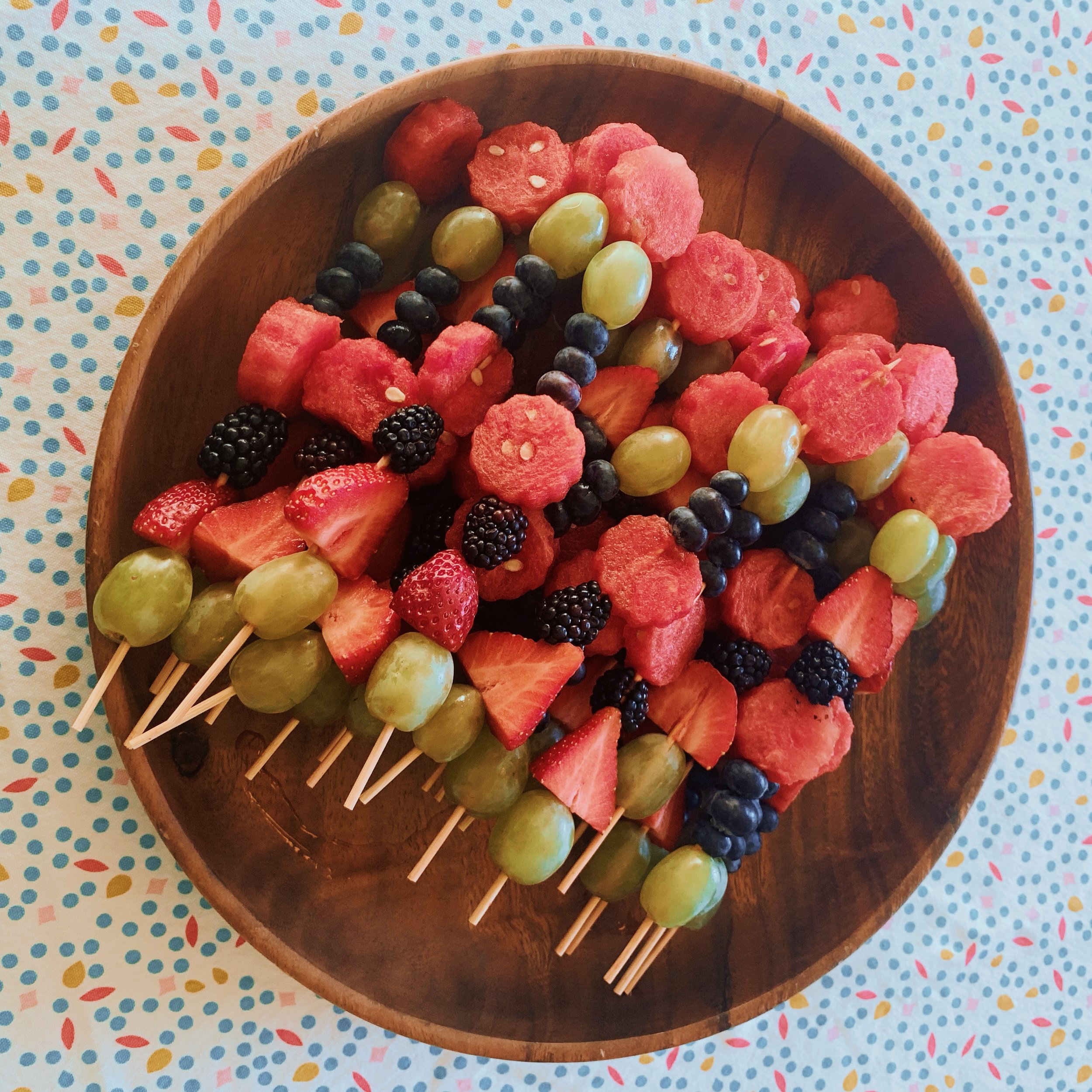Special Occasion Treats
If you’ve ever attempted to be more aware of or intentionally give up sugar in your diet (I’m talking all sugar even from packaged foods like pasta sauce, savory salad dressing and bread), then you know that there is sugar in everything nowadays! Due to the prevalence of packaged foods, many of us end up consuming far more sugar than we realize. The American Heart Association recommends a limit of 6 teaspoons (25 grams) of added sugar each day for women, yet the average American woman consumes 17 teaspoons (71 grams) of added sugar each day. The American Heart Association’s recommendation for children is somewhere in between 3-6 teaspoons (12-25 grams), depending on age and caloric need. One of the leading yogurt brands marketed for children has 10 grams in just one serving.
Wow! So clearly we are over consuming sugar and passing that on to our children, most of us not even completely realizing it. Even items that are considered healthy options for toddlers and children like yogurt, fruit juice, snack bars, and whole grain cereals can be some of the biggest offenders. In the next post of this series I plan to talk about how specifically this much sugar impacts kids (hint: immune system, behavior, obesity), but most of the moms I talk to are already trying to reduce their child’s sugar intake, but struggle with what this looks like in certain situations.
One question I often get when on this subject is how to address special occasions. Many of the nostalgic memories we have around holidays and birthdays involve our favorite treats and are positive associations we want to share with our kids. This can be making sugar cookies at Christmas, going trick or treating on Halloween, or diving into an elaborately decorated birthday cake surrounded by family and friends. As a health conscious mom (and a holistic nutritionist myself), it can be a struggle to find the right balance for these types of special occasions. On the coat tails of the holiday season (the peak sugar season!) we just celebrated my daughter’s second birthday, so this topic has been on my mind. I’m sharing a few ideas on how we decided to approach sweets for these special occasions below, I would love it if you shared your experience too (leave a comment, message me, or find me on social media).
Setting Our Own Boundaries for Special Occasions
Boundaries for sweets will vary from family to family and the age of the child. What I felt comfortable giving my daughter on her first birthday varied from what we gave her on her second birthday, even though my personal food philosophy hasn’t changed much. The American Heart Association recommends not giving ANY added sugar to children under the age of two. While I think this is a good goal for day to day, am not suggesting skipping out on the ceremonious smash cake for a first birthday. When Ingrid turned one, we had family in town and had just recovered from being sick so I didn’t have the time or energy to make her cake. I did find an organic bakery in town to make her cake which happened to be free of gluten, eggs, artificial dyes and refined sugar. She requested a spoon and didn’t end up eating much beyond the raspberry frosting. One advantage to going with this well known bakery over trying to make something of my own was that it was DELICIOUS! Why eat sweets (even if its a healthier version) if you’re not going to enjoy it??
When deciding what treats to offer my daughter for her second birthday (and other holidays too), we decided that we didn’t want to be too limiting. Other guests would be enjoying these treats too, and we don’t want sugar and treats to be so restricted for Ingrid that they are viewed as even more desirable. We want her to begin to learn how certain foods make her feel and how much of different foods she would like to eat. These are lofty goals for a two year old, but things we will continue working on. For the party we ordered donuts from a speciality donut place near us that uses organic ingredients and supplemented with a few homemade treats served in exciting ways including fruit kabob “fairy wands” and blueberry oat flour muffins sweetened with maple syrup. Ingrid ended up eating less than a quarter of a donut, a whole fruit kabob with plain yogurt for dipping, and half of a muffin the next day. In the end, I loved seeing her face light up with these treats and considered the extra sugar intake worth it.
6 Tips for Finding Balance with Sugar
Look through the foods you feed your child on a regular basis and tally up added sugars (look at pouches, yogurts, cereal, juice, bars, and on-the-go items). Having a better understanding of how much sugar your child is getting on a regular basis can help you make adjustments and set goals for special occasions.
Decide what your personal boundaries for sweets are including how often and what ingredients you would still like to avoid, whether its for an allergy or other reason. (examples include GMOS, refined sugars, artificial dyes, gluten, eggs, etc. )
Serve sweets alongside other food options and allow your kid to choose. You might be surprised when your child chooses fruit over finishing a donut! Serving sweets with foods containing higher amounts of healthy fat and protein stabilizes blood sugar as well (more on this soon).
Particularly for older kids, consider offering unlimited sweets on occasion! Feeding expert Ellyn Satter says that this can help children learn limits and not binge on junk food after being restricted.
Try to avoid giving dessert as a reward for doing something or for eating all of their dinner. This can lead to unhealthy associations later on or cause the child to view dinner as “something to be endured to get the good stuff”.
Don’t guilt yourself or your children for indulging in sweets! Eating dessert isn’t something we should have to regret or feel bad about. Remember that your children are watching and learning from you!
Thanks for reading this post! My daughter is still very young, so I acknowledge that we have a lot to learn regarding sugar at school, sporting events, and parties. If you have older kids and have valuable tips to share I would love to hear them! I’d also love to hear what questions you have around sugar so I can address them later in this series :)




